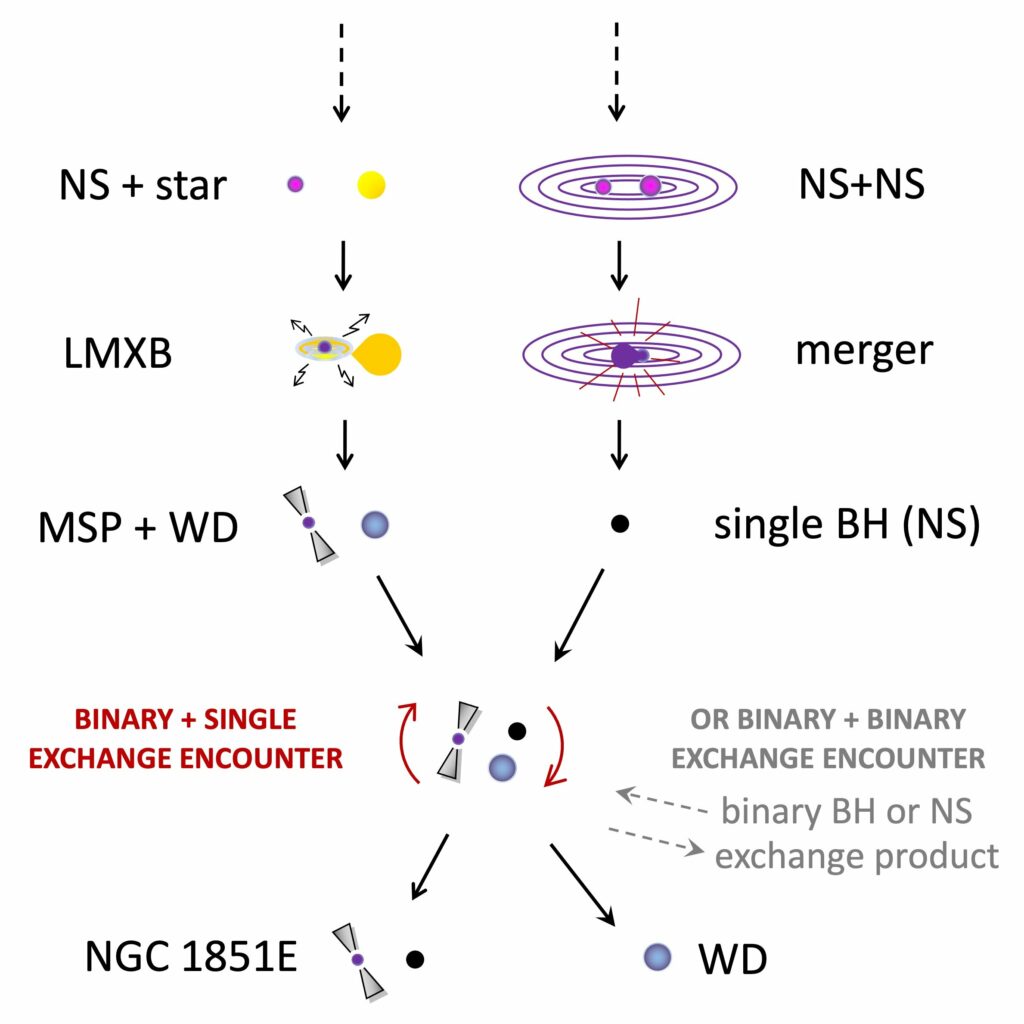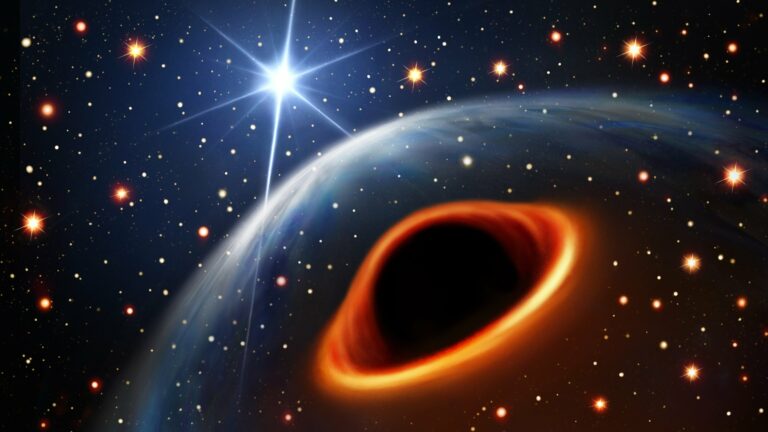MeerKAT Reveals Enigmatic Celestial Object in the Milky Way: Is it the Lightest Black Hole or the Heaviest Neutron Star?
A newly discovered object in the Milky Way has caught the attention of an international team of astronomers. This object, found using the MeerKAT Radio Telescope, is both heavier than the heaviest neutron stars known and lighter than the lightest black holes known. The astronomers, hailing from institutions such as The University of Manchester and the Max Planck Institute for Radio Astronomy in Germany, made this discovery while observing a rapidly spinning millisecond pulsar located approximately 40,000 light years away in a dense group of stars called a globular cluster.
By analyzing the precise timing of the millisecond pulsar’s ticks, they were able to determine that this massive object falls within the elusive black hole mass gap. This finding could potentially mark the first detection of a radio pulsar-black hole binary, a celestial pairing that holds great significance for testing Einstein’s general relativity and advancing our understanding of black holes.
According to Professor Ben Stappers, the project lead from the UK and a Professor of Astrophysics at The University of Manchester, both possibilities regarding the nature of the companion are intriguing. The existence of a pulsar-black hole system would be significant for testing theories of gravity, while a heavy neutron star would offer valuable insights into nuclear physics under extreme densities.
When a neutron star, which is the incredibly dense remnant of a deceased star, accumulates an excessive amount of mass, typically through the consumption or collision with another star, it undergoes a collapse. The aftermath of this collapse has been a subject of speculation, but it is believed that these collapsed stars could transform into black holes, which possess such immense gravitational pull that even light cannot escape from them.
Astronomers have determined that a neutron star requires a total mass of 2.2 times that of the sun in order to collapse. However, observations and theoretical predictions indicate that the lightest black holes formed from these collapsed stars are significantly larger, approximately five times more massive than the sun. This discrepancy is known as the “black hole mass gap.”The nature of compact objects within this mass gap remains unknown, and extensive research in this area has proven to be challenging thus far. The recent discovery of this object may provide valuable insights and contribute to a better understanding of these enigmatic entities.
Professor Stappers further emphasized the significance of the MeerKAT telescope’s exceptional sensitivity in detecting and studying these objects. This technological advancement represents a significant leap forward and offers a glimpse into the possibilities that will be unlocked with the Square Kilometer Array.
The observation of a vast assemblage of stars called NGC 1851 in the constellation of Columba using the MeerKAT telescope led to the discovery of an object. NGC 1851 is a compact cluster of ancient stars that are densely packed compared to the stars found elsewhere in the galaxy. The close proximity of these stars allows for interactions, which can disrupt their orbits and even result in collisions.
The scientists, who are part of the international collaboration known as Transients and Pulsars with MeerKAT (TRAPUM), propose that one such collision between two neutron stars gave rise to the massive object that now orbits the radio pulsar.By detecting faint pulses emitted by one of the stars, the team was able to identify it as a radio pulsar—a type of neutron star that rapidly rotates and emits beams of radio light into the universe, akin to a celestial lighthouse.

The pulsar rotates at a rate of more than 170 times per second, emitting a rhythmic pulse with each rotation, similar to the ticking of a clock. These pulses are incredibly consistent, and through the use of pulsar timing, researchers were able to make highly precise measurements of its orbital motion by observing changes in the timing of the pulses.Ewan Barr, along with his colleague Arunima Dutta from the Max Planck Institute for Radio Astronomy, described this process as being able to place an almost perfect stopwatch in orbit around a star located nearly 40,000 light years away, and then accurately timing the orbits down to the microsecond.
The precise timing also provided valuable information about the location of the system, revealing that the object in orbit with the pulsar was not a typical star, but rather an extremely dense remnant of a collapsed star. Further observations indicated that the companion had a mass larger than any known neutron star, yet smaller than any known black hole, placing it within the black-hole mass gap.
While the team cannot definitively determine whether they have discovered the most massive neutron star, the lightest black hole, or a new type of exotic star, they have undoubtedly uncovered a unique opportunity to study the properties of matter under the most extreme conditions in the universe.Arunima Dutta emphasizes that their work with this system is far from complete. Unraveling the true nature of the companion will be a significant milestone in our understanding of neutron stars, black holes, and the potential existence of other enigmatic objects within the black hole mass gap.
This article is republished from PhysORG under a Creative Commons license. Read the original article.
Do not forget to share your opinion with us to provide you with the best posts !




0 Comments